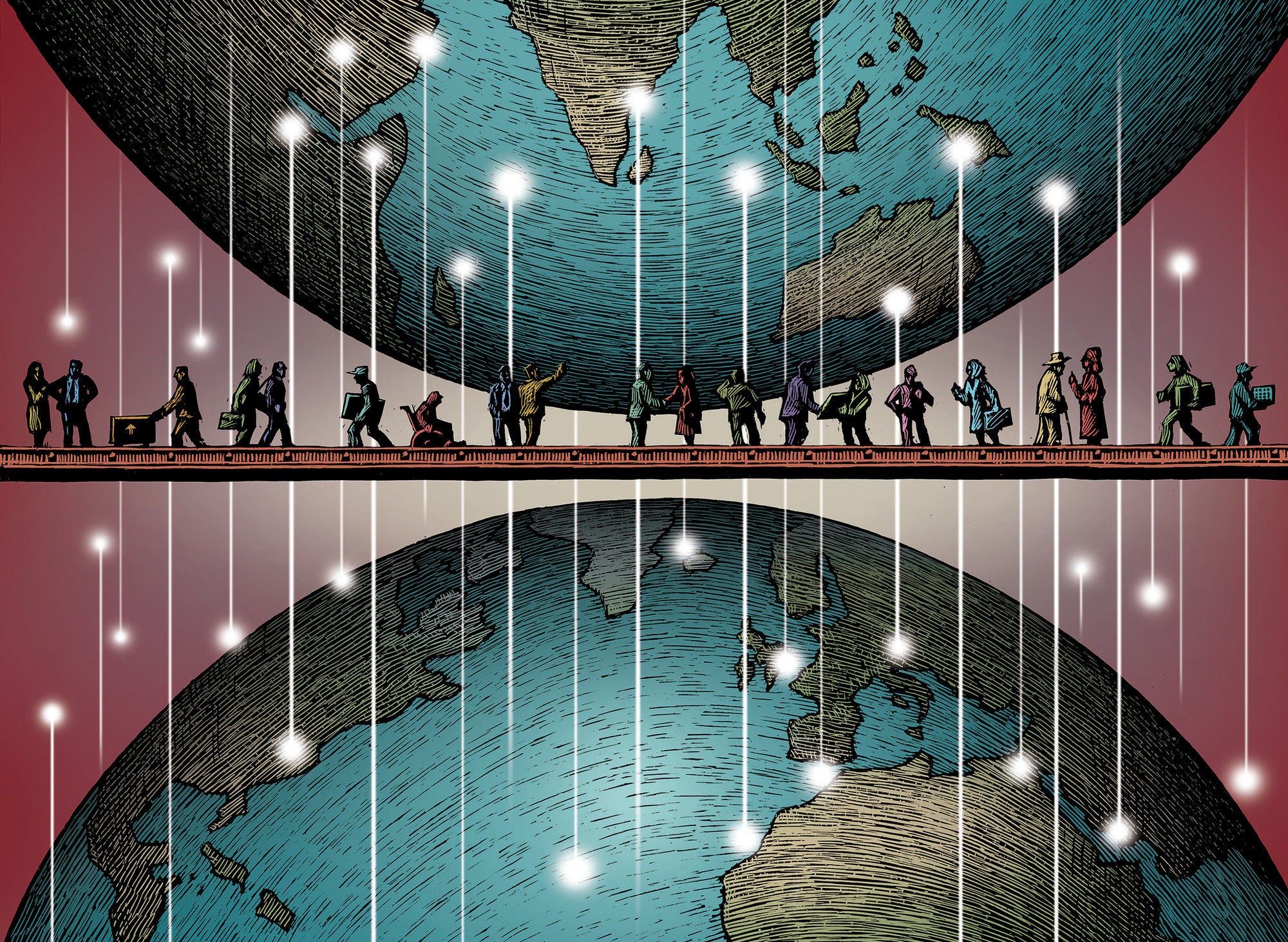In 2019, New Zealand received 38 000 new immigrants on a long-term or permanent basis (including changes of status), ‑14.9% compared to 2018. This figure comprises 10.5% immigrants benefitting from free mobility, 22.9% labour migrants, 57.2% family members (including accompanying family) and 9.4% humanitarian migrants. Around 16 000 permits were issued to tertiary-level international students and 112 000 to temporary and seasonal labour migrants.
China, India and South Africa were the top three nationalities of newcomers in 2019. Among the top 15 countries of origin, South Africa registered the strongest increase (5 300) and India the largest decrease (‑200) in flows to New Zealand compared to the previous year.
In 2020, the number of first asylum applicants decreased by ‑19.1%, to reach around 400. The majority of applicants came from Indonesia (100), China (60) and India (43). The largest increase since 2019 concerned nationals of Indonesia (100) and the largest decrease nationals of China (‑31).
Emigration of New Zealanders to OECD countries decreased by ‑83% in 2019, to 5 200. Approximately 21% of this group migrated to Japan, 20% to the United States and 14% to Australia.
In 2019, New Zealand announced that it would implement major changes to the way employers recruit some migrants for temporary work. The new framework will replace six types of temporary work visas and have three consecutive steps: an employer check, a job check and a migrant check. The reforms are being implemented incrementally and will be complete by November 2021.
As part of these reforms, in July 2020 skill levels were replaced with a median wage threshold (the 2019 rate still in force: NZD 25.5 per hour) in the Essential Skills visa (a temporary work visa for migrants with a job offer). This new threshold determines how long a migrant can stay on an Essential Skills visa and their options to support family. Migrants that earn less than the median wage but over an income threshold are eligible for 12‑month visas. Migrants earning more than the median wage are eligible for a three‑year visa, and may support their partner for a work visa, and their children for visitor or student visas. There is no longer a five‑year visa option for higher-skilled occupations.
COVID‑19 had a large impact on New Zealand, which closed its borders progressively from February and almost completely in March 2020. The Immigration (COVID‑19 Response) Act 2020 introduced new powers under which the Minister of Immigration can change conditions on classes of visas and grant new visas to classes of people. These powers, alongside short-term changes to policy settings, were used (among other things) to extend visas and add work rights for groups of visitors, students, and workers onshore following the border closure. Offshore applications for temporary visas were suspended, unless the applicant had been invited to apply following an Expression of Interest (EOI).
New Zealand also suspended a number of visa programmes, including selections for EOIs in the Skilled Migrant Category (SMC). As of mid‑2021 New Zealand is prioritising the processing of SMC and Residence from Work applications from persons that are currently in New Zealand, if the applicant is highly remunerated (at least NZD 51 per hour) or is authorised to work in an occupation that requires official registration. New Zealand will review the decision to delay the EOI selection process later in 2021.
New Zealand continues to select and assess EOIs for the Investor residence category, noting that successful offshore applicants may not be able to enter at present. In 2020‑21, 400 Investor places were made available.
Refugee resettlement under the Refugee Quota Programme resumed on a limited basis. Refugees under the Refugee Quota Programme started to arrive in New Zealand from early February 2021 in small family groups. The refugee quota of 1 500 places is unlikely to be met in 2020‑21.
In July 2020, New Zealand announced a set of policy and operational changes and NZD 50M in new funding to address migrant exploitation. The changes, being implemented in 2021, include a new dedicated reporting line for migrant workers and a new visa to ensure they can leave exploitative workplaces.
For further information:
www.immigration.govt.nz/about-us/what-we‑do/welcoming-communities

